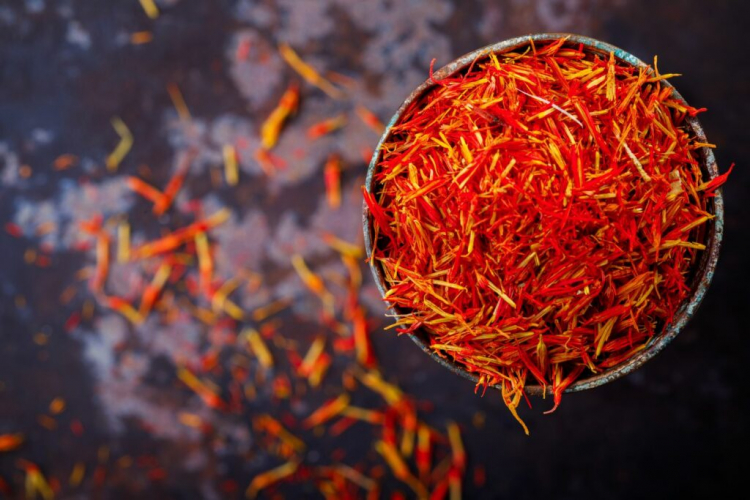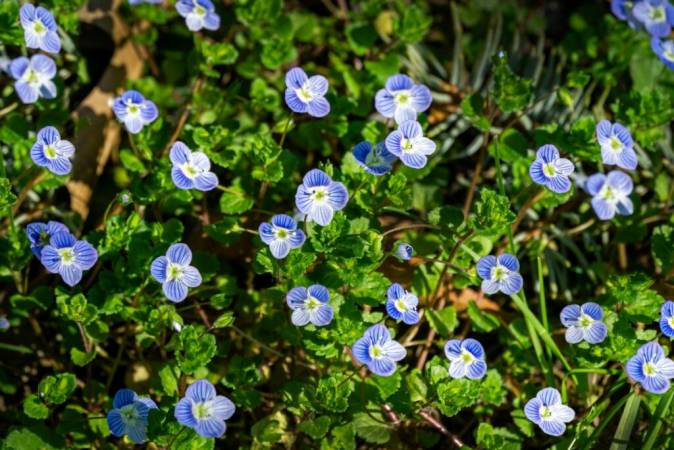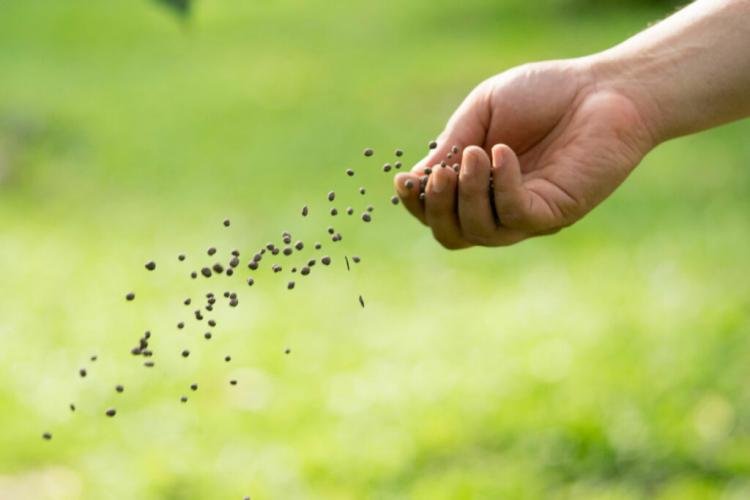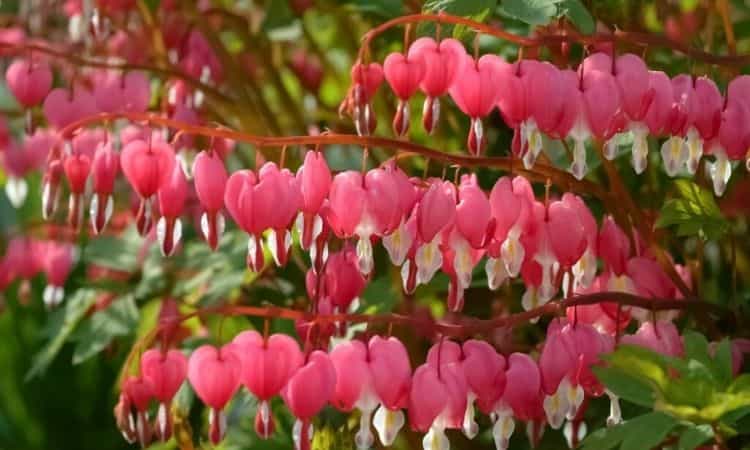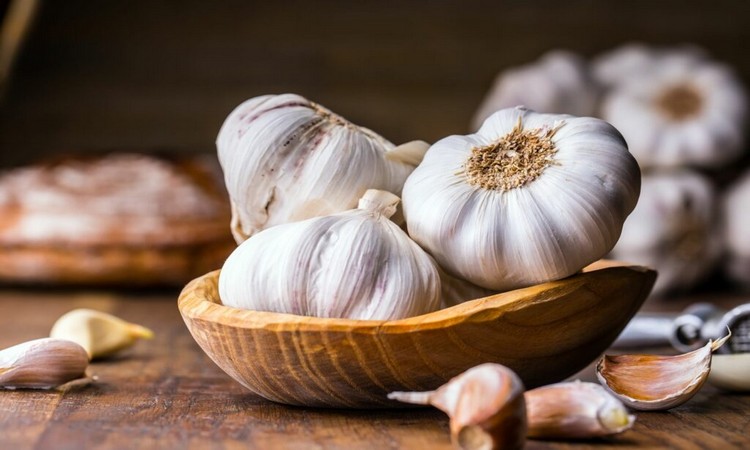Saffron: How To Grow And Care Of The Red Gold
Saffron is not only a special spice because of its enormous prices. Only the stylus of the flowers has a bitter and spicy aroma. Saffron ( Crocus sativus ) belongs to the Iris family (Iridaceae). With an average price of around $ 10 to $ 15 – per gram! – it is the most expensive spice in the world. For comparison: the price of one gram of gold fluctuates around $ 35. Since saffron is a type of crocus, it has a tuber – and not an onion, as is often wrongly assumed. The tuber sprouts again year after year.
Saffron is one of the autumn crocuses, as it only sprouts and blooms in the second half of the year. Some of its relatives, who usher in spring in our gardens, also differ from saffron by their significantly shorter stigmas. In the case of the noble spice from the Aegean Sea, these are strikingly red in color and length. They are also the only organ in saffron that has the characteristic bitter and spicy taste and fragrance. Each of the blue-purple flowers forms three such precious stigmas.
The noble crocus originated from a mutation of a related species that has significantly shorter scars. The plant, which is no more than 15 cm tall, has a triple set of chromosomes due to the mutation. As a result, saffron cannot produce pollen and is sterile. The reproduction can only take place via the so-called vegetative route. The largest growing areas are inconsistently warmer regions on the Mediterranean Sea and in the Middle East, but even here you can grow saffron in your own garden with a little skill.
Growing saffron
Table of Contents
Location
In Europe, saffron is mainly grown in Mediterranean countries such as Italy and Spain. However, Iran has the largest market share with 80 to 90%. These countries are particularly suitable for growing saffron because of their warmth and the many hours of sunshine. In any case, a place should be selected where the saffron will still get plenty of rays of light from the lower autumn sun when it sprouts.
You might so like: Wild Thyme Plant: Planting And Cutting Of Thymus Serpyllum
A well-draining soil with a certain amount of sand is also an advantage. Waterlogging must be avoided in any case. If the soil is too heavy and does not drain water well, sand can be worked in to achieve a more favorable water flow. Saffron can also be grown in pots. The best way to do this is to use peat-free soil. In addition, a location that is as sheltered from the wind as possible is important for the saffron.
Propagate and plant
Planting time for the saffron bulbs is from June to August. The planting depth should be 10 to 15 cm and the distance in the row 10 cm. The tubers sprout in the same autumn and bloom in October. Saffron is an evergreen plant – the foliage remains in place over the cold months and only dries up in the next spring. At temperatures from -15 ° C, however, it can slowly but surely become critical to the survival of saffron.
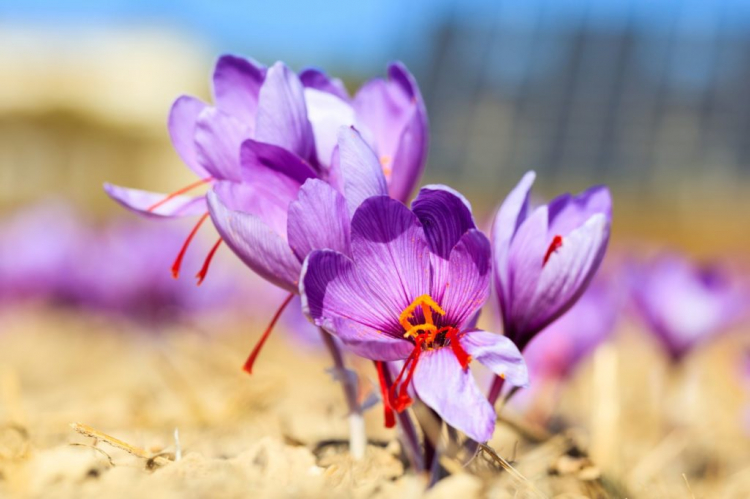
As already mentioned, saffron is sterile due to its triploid chromosome set. Propagation via seeds (so-called generative propagation) is therefore out of the question. The noble spice can only be propagated in an asexual way (so-called vegetative propagation). As is usual for crocuses, the saffron tubers from daughter tubers at the base of the tubers. These can in turn be cleared from the ground and planted next summer.
Watering and fertilizing
With regard to the water supply, the most important thing for saffron is that it does not have to experience waterlogging. Additional watering is actually only necessary in extreme drought and heat in late summer and autumn. No additional fertilization is required when cultivating in pots. If the saffron is planted in the bed, it is sufficient to supplement the soil in spring with a primarily organic long-term fertilizer. Organic universal fertilizer is ideal.
You might so like: Autumn Anemones: Location, Varieties, And Care Of The Anemone Hupehensis
Saffron care
In general, saffron is not particularly susceptible to pests and diseases. Nevertheless, after a while in the same location, soil-borne fungi can cause problems and endanger the life of the tuber. Therefore, the location of the iris plant should always be changed after four years. Voles like any bulbs and tubers, so it is not certain whether the rodents will leave something of the saffron tuber for the next sprout.
The reason why saffron cultivation is particularly productive and successful in warmer regions is the rather warm temperatures there, even in autumn. Temperatures around 15 ° C are optimal for saffron to ensure good and safe flower development. At the beginning of autumn, these will not be reached continuously here. This is at the expense of the number of tubers that reach flowering and thus leads to a lower yield.
Saffron: harvest and store
The area yield of saffron is comparatively extremely low. In order to be able to sell 1 kg of saffron, 150,000 to 200,000 saffron bulbs have to grow and bloom on 10,000 m2. This leads to extremely high costs per gram, and harvesting the saffron is entirely manual work. A trained person manages to harvest just 60 to 80 g of valuable spice a day. The harvest time of the glowing red saffron barrels is limited to two to three weeks in October. The so-called thinning with a pair of tweezers or with practice with the fingernails describes the separation of the stylus from the rest of the sterile flower.
You can either do this directly on the plant and leave the ornamental purple petals in place, or you can first harvest the entire flower. Then the stigmas are later separated from the rest of the flower. In any case, harvesting in the morning hours is beneficial. In this way, the sensitive scars can be protected from extreme sunlight and a loss of aroma.

In order to preserve saffron, the stigmas can be dried after the harvest. It’s very quick. In the sun, the process takes a maximum of an hour. After the drying process, the pens have lost around 40% of their fresh weight. Most of the time, the styles are stored as a whole in the form of the typical saffron threads.
They are seldom ground into a powder. This is also very easy to confuse with the powder that is obtained from the turmeric rhizome. Counterfeit saffron powder, which is actually turmeric, can be bought on the market and is a very lucrative business for counterfeiters. If the saffron threads are hermetically sealed and protected from light, they can be used for up to two years without any loss of flavor. The dark storage also keeps the color of the saffron longer.
Saffron: Uses and Ingredients
Saffron is known for its yellow-reddish color and bitter-spicy taste. Carotenoids are responsible for discoloration. It is also very popular for intensifying the color of various dishes in the kitchen. But in the past centuries, saffron was used to color in a wide variety of ways. For example, it was used to imitate the color of gold writing.
You might so like: Speedwell: The Medicinal Plants In The Garden
The bitter substance it contains is also known as saffron bitters. If saffron is used to refine various dishes, it should never be cooked too long. If the cooking time is too long, the color may end up being less intense and the flavors will evaporate. It is best to prepare the stylus in lukewarm water and only add it to the saucepan at the end of the preparation. If saffron is to be used in powder form, it is best to always use a fresh mortar to prepare the meal.
Saffron is particularly popular in Persian rice dishes. But there are also some classics in European cuisine that are refined with saffron:
- Paella: Spanish rice pan, often with seafood.
- Bouillabaisse: fish and seafood soup from Provence.
- Risotto alla milanese: Risotto of the Milanese style.
- Lusskatter: Swedish quark dough pastries.
All in all, saffron is special in many ways. But if you don’t want to do without the noble spice, you can avoid the high prices with a little skill and care by growing it in your own garden.
